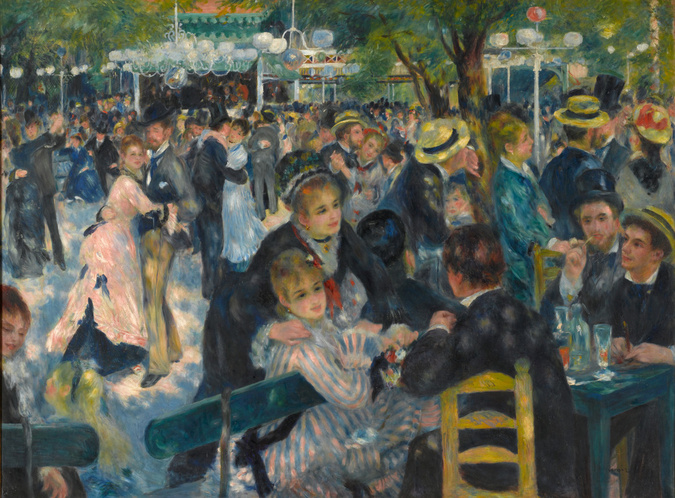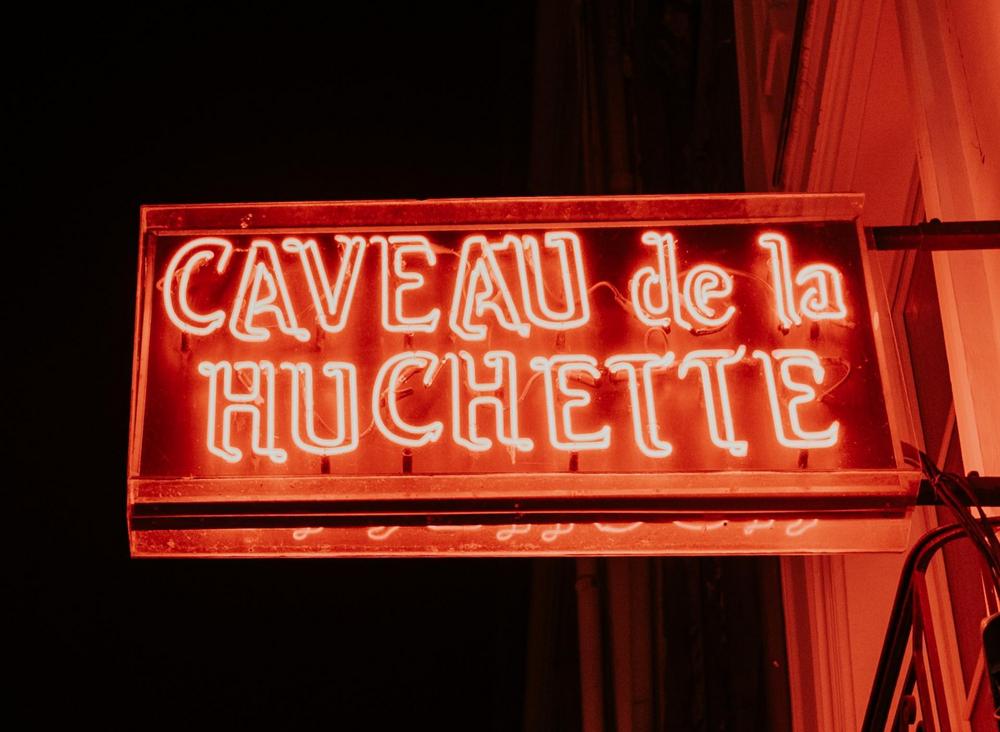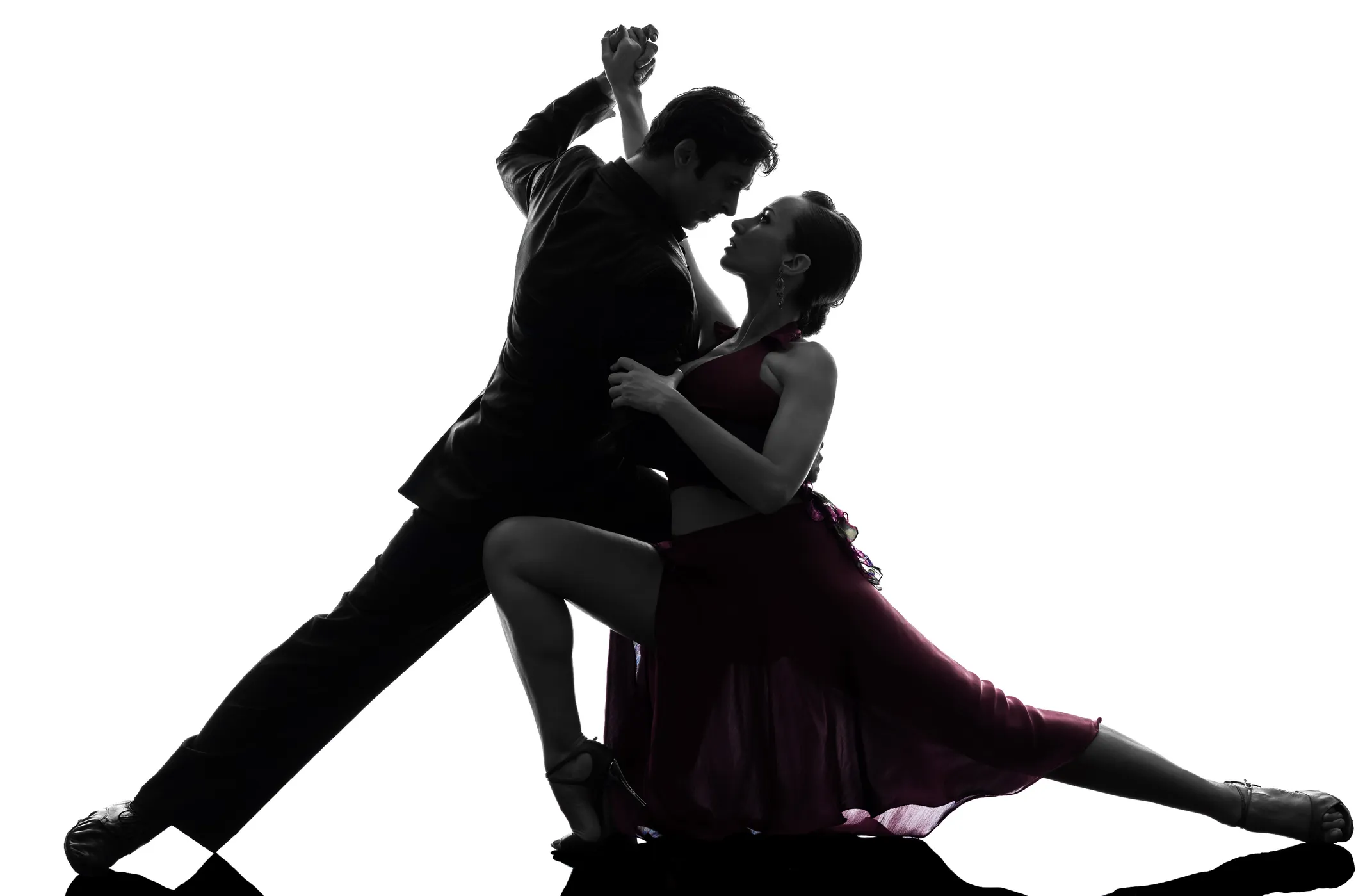By Lisa Bensoussan,
Ballroom dancing, as we find it today, has come a long way from its aristocratic origins, evolving into a dynamic and inclusive art form enjoyed by many people around the world. To explore this fascinating art, we will take a closer look at the rich history and development of ballroom dance, from its early beginnings to its modern-day popularity.
Ballroom dancing is a partner dance that requires the coordination and cooperation of both the leader and the follower. The leader is responsible for initiating the movements of the dance, while the follower responds and follows the leader’s lead, to the extent that, if a follower makes a mistake, people often say: “It is always the leader’s fault”. Even if partners do not know each other, they are able to understand the other’s intentions, but how? To ensure a successful dance, it is crucial for both partners to maintain a strong connection through their frames. The “frame” refers to the way the dancers hold their arms and bodies, which should be relaxed but firm, and provides a means of communication between the dancers — almost as its own language. To put it simply, communication is relayed through a sensation that travels through the dancer’s body to ours. One could almost say that it is telepathy, right? As a follower myself, I like to believe so. The steps are typically smooth and flowing, with an emphasis on precise footwork and musicality. Dancers can create a beautiful and harmonious dance experience by following these general rules.
Ballroom dancing has its roots in European court dances of the Renaissance period, such as the Pavane and the Minuet. Being a very elitist area, these dances were highly formalized and structured. In the 19th century, ballroom dancing began to evolve into a more relaxed and social form of dance. As people started to practice dance for their enjoyment, this type of dance developed in social gatherings. However, its growth was not as easy as we think. Religious leaders often tried, in vain, to combat these dances due to Christianity’s rejection of the body. In social dance, the dancers’ movements can represent a wide range of cultural and social meanings, such as celebrations or expressions of social status. Indeed, people had to “prove themselves through their social skills, especially through dance”, clarified the author Richard Powers.

Social dances of the past have had a significant influence on modern social dances, with many traditional styles and movements still being practiced and adapted to contemporary contexts, including the French Modern Jive.
In recent years, social dance has also become increasingly inclusive as more people from diverse backgrounds and identities participate. Dance communities have been working to create safe and welcoming spaces for dancers of all ages, genders, ethnic groups, and abilities, and are incorporating new styles and cultural influences into traditional routines. You can now see couples dancing for free on famous plazas, on the Quai Saint Bernard in Paris, or in Manhattan, New York City.
In the same period as the social dance’s rise, new dances such as the Waltz and the Tango emerged, and couples began to dance in a closer, more intimate embrace. Dance was part of the code of seduction at this time: “To be fond of dancing was a certain step towards falling in love” said Jane Austen in the book Pride and Prejudice. Indeed, literature of the time demonstrated how inviting someone to dance formed part of the traditional courtship ritual.
The similarities between the social and the intimate forms of dance can make it difficult to define clear boundaries between the two. While the distinction can depend on a variety of factors, the line is ultimately blurred, which can lead to complicated – even heartbreaking – situations.
In the early 20th century, social dance grew into a democratized craft. Indeed, ballroom dancing became more widespread, with many dance schools and clubs opening up to teach the new dances. The emergence of jazz music also had a major influence, with new styles such as Charleston and the Swing becoming popular. A famous club, the Caveau de la Huchette in Paris, has been a popular spot for social dance for decades. A temple of jazz and ballroom dance, the club was featured in the movie La La Land as a nod to its cultural significance and its role in helping to popularise swing, while it continues to inspire dancers, musicians, and particularly filmmakers around the world. Whilst swing dances were featured in motion pictures, film directors naturally contributed to this movement.

Ballroom dance is constantly adapting and evolving. People currently dance traditional swing like West Coast Swing to a variety of music, such as electronic music or K-pop, allowing a fascinating clash of cultures.
As many dance schools opened, in the mid-20th century, teachers made ballroom dancing an industry. It was then associated with competitive dancing, after the formation of organizations. New dances such as the Cha Cha and Samba were introduced and partnered dance genres became more athletic and dynamic. Many dance competitions continue to attract large crowds and receive significant media coverage, and the popularity of dance-based TV shows like Dancing with the Stars suggests that there is still a strong interest in competitive dance. Additionally, efforts are being made to break down gender and role-based stereotypes in partner dancing, creating more opportunities for individuals to express themselves through dance. Women can be leaders, just as men can be followers. Due to being more inclusive, new rules allowing same-sex couples to compete in competitions have become quite common.
However, competitive dance may be experiencing a decline of late. Various factors have precipitated this downturn such as its prohibitive cost or the significant time commitment. Moreover, due to its high-pressure nature, participation has been affected by the COVID-19 pandemic as more and more people have begun to prioritize their mental health since 2020. Despite this, ballroom dancing has continued to evolve, with non-competitive styles such as the Argentine Tango and the Salsa gaining significant popularity.
Ultimately, ballroom dancing is a marvelous discipline that offers us a very special way of connecting with people that is hard to find anywhere else. Beyond this, it is a captivating craft that reflects on our society through its cultural evolution. Being a multidisciplinary art, everyone can find their groove there, practicing either Salsa or Lindy Hop, among so many others, just like I did.
References
-
Ballroom Dancing 101: Leading & Following. andymurraydanceclasses.com. Available here
- Ballroom dance. britannica.com. Available here
- « To Be Fond Of Dancing Was A Certain Step Towards Falling In Love »: The Function Of Dance In Jane Austen’s Pride and Prejudice, 2001, JASNA Essay Contest First Place Winner Graduate Division, Laurie L. Lyda, Appalachian State University, Boon, NC.
- The chronic exhaustion of competitive dance. writetheworld.org. Available here




